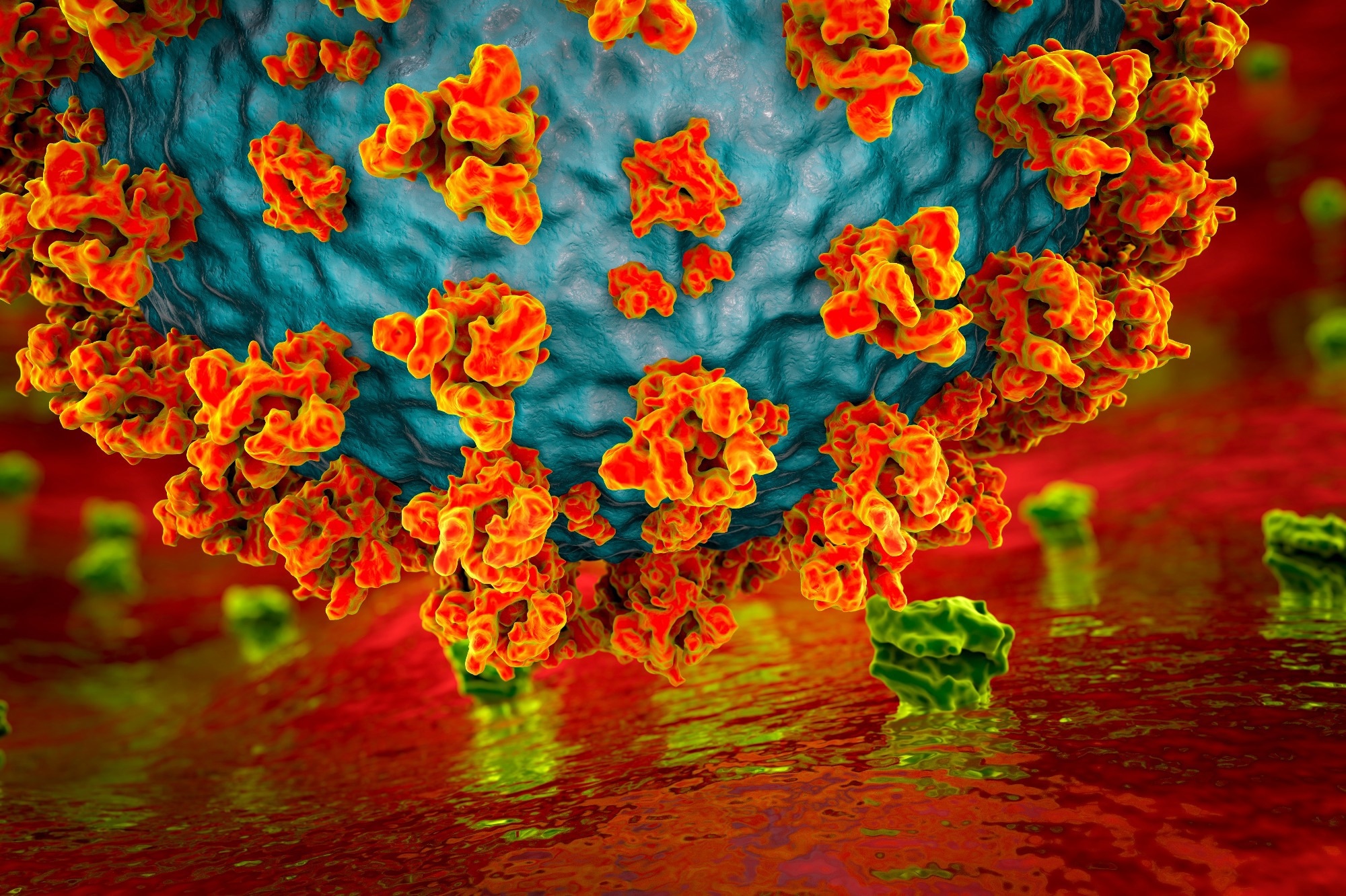In a recent paper published in the American Journal of Clinical and Experimental Urology, researchers reviewed existing data on the effects of severe acute respiratory syndrome coronavirus 2 (SARS-CoV-2) infections on the male genitourinary (GU) tract.
SARS-CoV-2 invasion into the host by the respiratory route is well established, and research has been undertaken to explore other potential routes of SARS-CoV-2 invasion, such as semen. However, reports of transmission via the genital route have been contradictory, and long-term outcomes on the male GU tract need further investigation.
 Review: SARS-CoV-2 Effects on the Male Genitourinary System. Image Credit: Kateryna Kon / Shutterstock
Review: SARS-CoV-2 Effects on the Male Genitourinary System. Image Credit: Kateryna Kon / Shutterstock
About the review
In the present review, researchers provided a cohesive summary of existing literature findings on the impact of SARS-CoV-2 infections on the male GU tract.
SARS-CoV-2 detection in the bladder and urine
SARS-CoV-2 spike (S) protein binds to host angiotensin-converting enzyme 2 (hACE2) receptors for entry into host cells, and ACE2 expression has been documented by the prostate and bladder urothelial cells. In addition, the prostate glandular, hillock, and club cells have shown transmembrane serine protease 2 (TMPRSS2) activity.
SARS-CoV-2-associated alterations in prostate TMPRSS2 levels could lead to lower urinary tract symptoms (LUTS) such as urinary storage symptoms that have been found to correlate with coronavirus disease 2019 (COVID-19) severity and therefore indicate COVID-19 prognosis, although reports have been contradictory. COVID-19 severity has been reported to be higher among prostate cancer patients compared to those with bladder or renal cancer.
Studies have reported SARS-CoV-2 uptake throughout the male genital tract in Rhesus monkeys within a few weeks of infection with high viral loads in the testes, prostate, pampiniform plexus, and penis with infectivity correlated with advancement in the male GU tract.
SARS-CoV-2 ribonucleic acid (RNA) has been detected in the urine of moderate or severe COVID-19 patients, although the duration of SARS-CoV-2 shedding in urine is undetermined. The mechanisms underlying the effects of SARS-CoV-2 infections on the urinary tract are also unknown, although two theories have been postulated.
SARS-CoV-2 may directly invade luminal cells of the urothelium through ACE2 receptor pathways and cause LUTS symptoms; however, the site of ACE2 expression (bladder urothelial luminal cells or basal cells) is not well-characterized, although research has indicated higher ACE2 expression by bladder luminal cells. The exact mechanisms of COVID-19-associated cystitis (CAC) with urinary invasion from the luminal side or hematogenous invasion from the basal side need to be investigated. SARS-CoV-2 RNA has been infrequently detected in the urine of COVID-19 patients with recently developed urinary tract symptoms, indicative of SARS-CoV-2 propagation via basal layer cells of the urothelium to the bladder.
CAC could also occur due to elevated levels of inflammatory cytokines in COVID-19 that are released into the urine. For example, increased levels of cytokines such as the interferon-gamma-inducible protein 10 (IP-10), chemokine ligand 1 (CXCL-1), C-reactive protein (CRP), and interleukin-6 (IL-6), have been observed among SARS-CoV-2-positive individuals with urinary symptomatology (urinary incontinence, urgency, increased urinary frequency, gross hematuria or nocturia). In addition, the risk of symptomatic gross hematuria has shown a positive correlation with COVID-19 severity.
SARS-CoV-2 detection in the testes and penis
The high affinity of SARS-CoV-2 for TMPRSS2 receptors has led to the speculation of testicular tissue invasion by SARS-CoV-2. Autopsy reports have shown dramatic damage to the testicular architecture with increased germ cells and apoptotic cells in seminiferous tubules and macrophages and T-lymphocyte infiltration in the interstitial tissues.
Electron micrographs of testicular tissues have shown SARS-CoV-2 presence in biopsy samples of living and deceased individuals. Further, increased ACE2 expression in testes has been associated with altered sperm parameters (such as low sperm count) and impaired spermatogenesis. In addition, scrotal/testicular pain and increased epididymo-orchitis (inflammation of the epididymis and/or testicle) have been reported among hospitalized COVID-19 patients, although there have been contradictory reports.
Immunohistochemistry (IHC) analysis findings have shown SARS-CoV-2 S presence in the epididymis, endothelial cells of the seminal vesicles, and capillaries proximal to the seminal vesicles, macrophages, and lymphocytes, indicative of blood-testes-barrier penetration by SARS-CoV-2. Furthermore, SARS-CoV-2-infected inflammatory cells can migrate into testicles and subsequently be taken into spermatogonial cells and local macrophages, following which SARS-CoV-2 replication can occur in complexes formed by the Golgi apparatus and endoplasmic reticulum. Therefore, SARS-CoV-2 may be detected among COVID-19 convalescents.
SARS-CoV-2 has been detected in penile endothelial cells with erectile dysfunction (ED) seven months following COVID-19 by electron microscopy; however, histopathological examinations have shown no disturbances in penile architecture. SARS-CoV-2 infections may be associated with long-term ED post-COVID-19 resolution due to lower endothelial nitric oxide synthase levels in COVID-19.
In addition, post-resolution of SARS-CoV-2 infections, patients have developed penile plaques and Peyronie’s disease, Mondor’s disease, and penile necrosis, probably related to the hypercoagulable state in COVID-19. However, further research is required to determine if the aforementioned diseases are secondary or indirect consequences of the vascular pathophysiology of COVID-19 or direct effects of SARS-CoV-2 invasion in penile tissues.
Overall, the review findings showed that SARS-CoV-2 could affect the male GU tract, which expresses ACE2 and TMPRSS2, proteins required for SARS-CoV-2 entry in the host. LUTS symptoms have diagnostic and prognostic values in COVID-19, and in addition to urinary symptoms, sexual symptoms such as ED may occur in COVID-19 patients. However, further research is required to determine the duration of SARS-CoV-2 presence in the male GU tract, viral shedding, and elucidate direct and indirect mechanisms of COVID-19 pathogenesis in the male reproductive system.